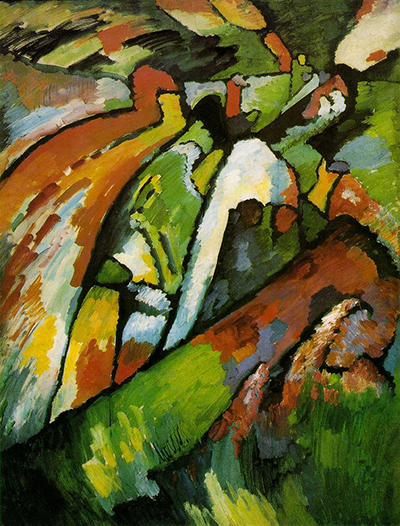Improvisation 7 is one of a series of paintings from Wassily Kandinsky in which he aims to explore his own mind for inspiration, rather than purely depicting elements of reality.
Impressionism had swept across Europe in the previous century and aimed to allow artists the ability to incorporate emotion into their work in a free and expressive way. The 20th century would then bring in new movements which took this idea much further and Kandinsky was someone who was heavily involved in that. Even within his own career he would experiment with different series of work, some of which would focus on reality, whilst others would attempt to use colours, lines and shapes without any connection to real life, but in a way that allowed him to work purely from his own expression. Such an idea was hard to accept for many at the time, particularly within traditional Russian circles, but over time many more have grown to appreciate these new ideas, perhaps even seeing what came before as stuffy and restricted.
Kandinsky would describe these impressions as the process of external nature into art. At this point in his career, he was still being particularly experimental and seeking out a direction for his career. He came into this profession late, having initially trained as a lawyer, serving the wishes of his family to do so. He eventually found his true calling and achieved great success in this more creative role that would later take him abroad many times.
This piece is dated at 1910 and is now a part of the collection of The State Tretyakov Gallery in Moscow, Russia. The painting is over a metre wide and just less than that tall. The tones of green, brown and white contrast beautifully against the darker lines which generally are placed between each shape. Each of the tones are gradients with darker and lighter shades and this leaves a wonderfully blended piece which can be appreciated for its aesthetic value even before one starts to consider the meaning of the different parts of the composition. The State Tretyakov Gallery focuses on Russian art and provides a particular coverage of the past two centuries, with the likes of Repin, Goncharova and Surikov to be found here.




